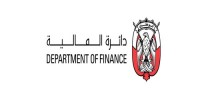
Financial Forecasting for Dynamic Business Results
Course Introduction:
Executives are faced with ever-increasing challenges. Flatter corporate structures, global competition, overcapacity, downsizing, and changing business environments have placed enormous demands on managers, calling for greater management skills. Today’s executives wear multiple hats and need multiple skills. Even highly innovative and creative managers with excellent people skills must report and understand financial terms and concepts.
This course will provide the participants with a basic understanding of how to prepare a financial plan or budgeted financial statements. It will cover best practices in budgeting and the problems associated with budgeting and how to solve them. It will also enhance your ability to prepare, interpret and use financial information in your managerial decision-making. It has been designed to transform the non-financial and finance manager into a more effective team member who can propose, analyze and evaluate financial; planning and forecasting decisions. It does so by providing a fundamental understanding of the content, concepts, software models and terminology of financial planning and forecasting. These are reinforced with multiple questions and answers, discussions, group breakout sessions; excel template presentations, videos and exercises.
The Program is designed to help the participants:
- Understand the principles of financial planning and forecasting and the practical problems and how to overcome them.
- Understand how economic outcomes of business decisions are planned for and reflected in your organization’s financial reports.
- Communicate more effectively with the financial executives in your organization.
- Improve your financial vocabulary so that you are better able to understand and interpret financial information.
- Increase your comprehension of current analytical financial planning and forecasting practices and techniques.
- Learn to use financial forecasting information in managerial decision-making.
- Discuss current financial problems.
- Understand the impact of operating decisions on financial performance.
Course Objectives:
- Make more meaningful and complete assumptions
- Build more realistic forecasting models
- Understand the risks inherent in your business
- Use the appropriate measures in selecting your forecasting models
Who Should Attend?
The course is for non-financial and financial mid to upper level managers in every functional area and all industry sectors both in the public and private sectors. Managers from areas such as marketing, sales, and services finance, manufacturing, or engineering, who use financial data for decision-making. It is for other participants in a position to influence the design of their organizations’ planning, control, costing, and performance measurement systems. Managers in a position to influence the financial planning process of a company, emerging business, and/or business unit within a large organization
Course Outline:
Welcome & Introduction
Course Objectives
An Overview of the Planning and Budgeting processes
· An overview of the business planning and control processes
· Integrating short-term budgets into long-term plans
· What are the major components of budgets?
· Budgeting for profit versus cash flow forecasting
· What are the major budget preparation methods?
· How to monitor and review budgets – variance analyses
Let’s Learn some Finance Principles
· The accounting cycle – from source cost and revenue documents to financial statements
· What is the significance of the chart of accounts?
· The difference between statutory and management accounts
· What are the major accounting guidelines and standards?
· Simplifying The Major Accounting Terms You Should Know
· What are the key accounting and costing concepts?
· What are assets and how are they valued?
· What are liabilities and how are they valued?
· What comprises equity and how it is disclosed?
· What are the different types of revenue and expenditure items?
· What are provisions, accruals and prepayments?
· How do you depreciate and amortize assets?
· What is "accrual accounting" profit and how does it differ from cash flow?
The fundamentals of Financial Planning and Forecasting
· What is a financial plan?
· Why is planning an important concept in managing a business?
· What is the difference between planning and forecasting?
· Who is responsible for the financial planning function in the business?
· Planning for costs and revenues
· Why do business costs need controlling?
· Uncontrollable costs – do they exist?
· Who has the responsibility for cost management in the business?
- Overview of the financial statements and how they interrelate
- The Balance Sheet – the financial "snapshot" of the business
- The Profit and Loss Statement. How can we project it out for 5 years?
- What are the more important items you should look for?
- What the financial statements will not disclose - how can we get behind the figures?
Exercise: An example of a financial plan
Forecasting and controlling revenues: sales and service income
· How are sales revenues to be estimated – top down or bottom up?
· Are there different approaches between manufacturing and service businesses?
· Does market and field research have apart to play in this process?
· Working Capital and its importance
· What is working capital and what does it mean for business?
· How much working capital does a business need in the future?
· The importance of cash flow forecasting
·
Exercise: Cash flow
Financial Statement Analysis and Forecasting
· Categorization of ratios
· Various types of ratios including Liquidity Ratios, Solvency Ratios, Structure Ratios,
· Leverage Ratios, and Coverage Ratios.
· Significance of these ratios
· Various other types of ratios including Profitability Ratios, Expense Ratios, Turnover
· Ratios, and Market Sensitivity Ratios.
· Decomposition of Return On Asset and Return (ROA) On Equity (ROE)
· Limitations of ratio analysis
· How to measure performance using percentage and trend analysis
· The more important ratios you should know for analyzing financial statements
· What is the cost of capital and what is its significance?
Forecasting and budgeting direct and indirect labor costs
· Planning labor costs both direct and indirect
· Recording direct and indirect labor costs
· Budgeting for direct and indirect labor costs
Discussion & Individual exercises
Flexible budgets: concepts, development and application
· What is flexible budgeting?
· Use of sensitivity analysis
· Importance of flexible budgeting in practice
Group & individual exercises
Budgeting and forecasting capital expenditures
· Difference between capital and revenue expenditure
· Organization of capital expenditure budget approval systems
· Need for capital project monitoring
Discussion & review
Budgeting and controlling cash flows
· Turning budgeted sales revenues, costs and capital expenditure plans into a cash budget forecast
Completion procedures and applications of the overall profit plan or master budget
· The financial planning and forecasting process as a control system within the business
· The behavioral aspects of accounting control systems
· Responsibility budgeting, accounting & control ideas
· Zero based budgeting concept (ZBB)
· Activity based management (ABM) and Activity based costing (ABC) defined
Group exercises
Course review
Course critique
Course close
Course Methodology:
A variety of methodologies will be used during the course that includes:
· (30%) Based on Case Studies
· (30%) Techniques
· (30%) Role Play
· (10%) Concepts
· Pre-test and Post-test
· Variety of Learning Methods
· Lectures
· Case Studies and Self Questionaires
· Group Work
· Discussion
· Presentation
Course Fees:
This rate includes participant’s manual, Hand-Outs, buffet lunch, coffee/tea on arrival, morning & afternoon of each day.
Course Timings:
Daily Course Timings:
08:00 - 08:20 Morning Coffee / Tea
08:20 - 10:00 First Session
10:00 - 10:20 Coffee / Tea / Snacks
10:20 - 12:20 Second Session
12:20 - 13:30 Lunch Break & Prayer Break
13:30 - 15:00 Last Session





.jpg)






















































































































